Bond LSC News
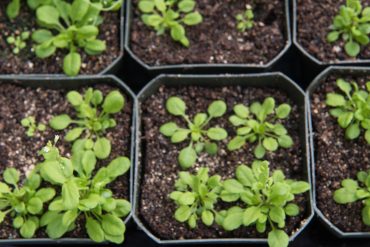
March 2, 2023
Scientists discovered a NEET connection in leaf-specific iron deficiency responses
By Josie Heimsoth and Cara Penquite | Bond LSC David Mendoza unflinchingly faces the “black box” of plant science everyday, asking the question, ‘how do plants know if they don’t have enough nutrients?’ Mendoza’s study of micronutrients — elements vital to plant health and energy but only present in small quantities — led him to iron and a collaboration with Ron Mittler on a $1.2 million grant. The grant was awarded by the National Science Foundation in October 2022 to advance the understanding of autonomous leaf-specific iron deficiency responses. “For iron, the window between being…

Feb. 24, 2023
#IAmScience Leah Whitley
By Sarah Kiefer | Bond LSC When cold and dry air collide in a battle of wind and debris, a tornado begins to form. This process got Leah Whitley into the field of science, intrigued with how things materialize in the world. “I’ve always had a fascination with how things build up, and how everything has to come together to produce the weather, and that’s what interested me in science” Whitley said. Between meteorology, anesthesiology and more, Whitley found a premed academic track, studying biological sciences, to be the path that’s stuck thus far and one that can…

Feb. 24, 2023
Bond LSC researchers recognized among most cited scientists of 2022
Bond Life Sciences principal investigators Bing Yang (left) and Ron Mittler (right) are recognized for making the Highly Cited Research List by Clarivate. | Photos by Erica Overfelt, Bond LSC. By Josie Heimsoth | Bond LSC Science builds on the work of all those experiments that come before, so it’s no surprise that being frequently cited is an honor that reflects on the quality and importance of a researcher’s work. Two members of Bond Life Sciences Center once again join a list of the most Highly Cited Researchers for 2022. Bing Yang…

Feb. 17, 2023
#IAmScience Adam Shoemaker
By Sarah Kiefer | Bond LSC With each fresh streak of transformed E. coli cells growing in a Petri dish, Adam Shoemaker finds a bigger purpose in the lab work he is doing every day. “I’ve always had the philosophy that I want to have the world be a better place when I’m gone because of my work, and anything I can do to contribute towards that is work that I’m interested in,” Shoemaker said. Missouri born and raised, Shoemaker is doing essential research that yields results with time and dedication. Although now working…
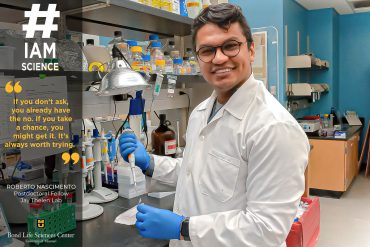
Feb. 10, 2023
#IAmScience Roberto Nascimento
By Sarah Kiefer | Bond LSC Roberto Nascimento believes a personal touch led him to where he is today. Nascimento found it essential to reach out via email to the programs where he might land, which is something many of his peers questioned. But, Nascimento saw it very clearly. “If you don’t try, you already have the no. If you take a chance, you might get it. It’s always worth trying,” Nascimento said. One of those emails and a desire to combine new skills with his previous experience in mass spectrometry led him to become a…
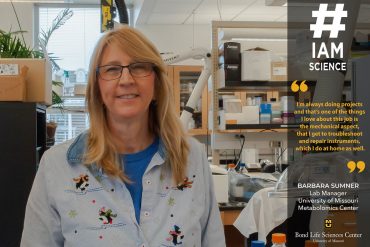
Feb. 3, 2023
#IAmScience Barbara Sumner
By Sarah Kiefer | Bond LSC Barbara Sumner grew up in Houston, Texas, and discovered her enthusiasm for chemistry in high school, captivated by how chemical processes can explain how things work in our everyday lives. “It was a subject that I just really loved,” Sumner stated. Sumner originally pursued chemical engineering in college, which she thought she would love because of how much she liked piecing things back together or fixing problems that arise in an experiment. But after deciding she enjoyed learning about the detailed understanding provided by the fundamental chemistry more than…
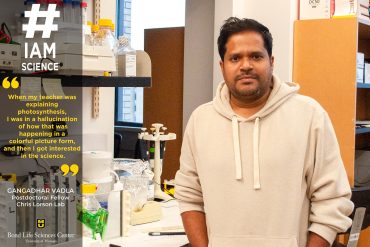
Jan. 27, 2023
#IAmScience Gangadhar Vadla
By Sarah Kiefer | Bond LSC Sunlight is where it starts for a daffodil. As rays cascade upon the plant, photosynthesis begins and this carbon dioxide and oxygen exchange gives the flower what it needs to survive. For Gangadhar Vadla, he drew a picture of this vibrant process in his head in high school. “When my teacher was explaining photosynthesis I was in a hallucination of how that was happening in a colorful picture form, and that’s how I got interested in the science,” Vadla said. Vadla’s passion for processes that fuel our planet’s…

Dec. 16, 2022
Competing signals: scientists explore how iron sensing and plant immune signaling interact with $1.2 million NSF grant
Bond LSC researchers Scott Peck (right) and David Mendoza (left) collaborate with MU biochemist Antje Heese in a new $1.2 million NSF grant. By Josie Heimsoth, Bond LSC Plants must integrate many environmental signals to successfully grow and reproduce. Three researchers at MU have recently discovered a new connection between some of these signals that recently led to a $1.2 million National Science Foundation (NSF) grant that may lead to improvements in both plant immunity and plant nutrition. Lead researcher Scott Peck has studied how plants respond to changes in their environment…

Dec. 9, 2022
#IAmScience Longfei Wang
By Sarah Kiefer | Bond LSC Longfei Wang, like many, was in high school when he realized for the first time what he wanted to be when he grew up. In his case, it happened to be choosing the path of a biologist. His fascination with a well-known fundamental biological structure was the main factor in his decision. “I was thinking the DNA double helix looks awesome,” Wang said. “This structure is identical for everyone, but each person is unique, at both [a] physical and mental level, which indicates how miraculous this…
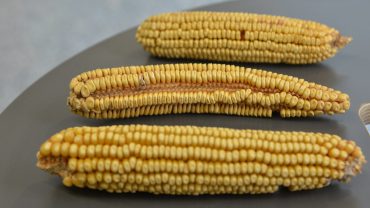
Dec. 2, 2022
Understanding grass diversity: the key to increase crop yields
The mutant corn ear in the middle makes kernels in single rows rather than paired rows. The McSteen lab studies kernel development in this grass crop to one day help improve crop yields. | photo by Kristina Abovyan, Bond LSC by Kristina Abovyan, Bond LSC You might look at your yard and not think much of grass, but the family of narrow-leafed plants spans 12,000 species and a world of diversity from the grasslands of the Serengeti to the corn fields of the Midwest. “They are incredible; they are all over the world and do all kinds…
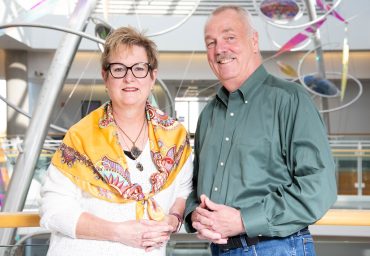
Nov. 4, 2022
Complementary Crafts: New Bond LSC investigators bring dual microbiology projects to the center
By Cara Penquite | Bond LSC Wendy and Bill Picking tackle a stomach-churning area of science. Fascinated by the bacterium responsible for bacillary dysentery, Bill studies its structure and function, while Wendy aims to use information on that same bacterium for healing. “I do the vaccine stuff, but he’s a protein chemist. So the proteins are what keep us together,” Wendy said. As two of Bond LSC’s newest investigators, the couple brings pathogenic microbiology expertise to the center. Their hiring is part of MizzouForward, an investment that aims to elevate and promote the University of…
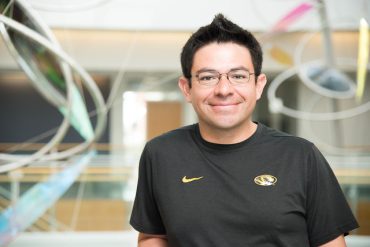
Oct. 11, 2022
Mendoza lab receives $200,000 Pew Charitable Trusts grant for plant microbe nutrition collaboration
Pew Charitable Trusts may be best known for its non-partisan think tank subsidiary that focuses on demographic and social science issues, but its mission to improve public policy and inform bleeds over into support for science. David Mendoza — a Bond Life Sciences Center principal investigator and associate professor of plant sciences in the College of Agriculture, Food and Natural Resources — received a $200,000 grant for biomedical sciences from the Pew Charitable Trusts. “To have people you need plants, so if we manage to engineer better and more nutritious plants, the chances of improving…